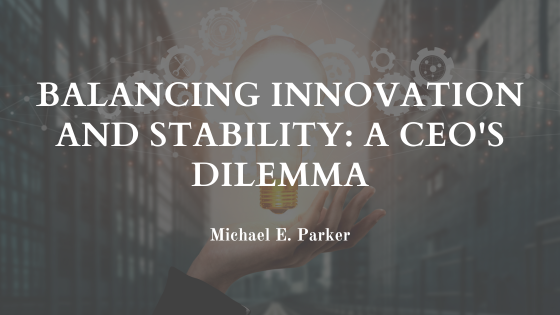Navigating the delicate balance between innovation and stability is a paramount challenge faced by today’s business leaders. Picture this: a CEO stands at the helm of a ship, steering through turbulent waters while trying to maintain equilibrium between the winds of change and the sturdy anchor of consistency. In the dynamic dance of business, finding the sweet spot between pushing boundaries and ensuring a solid foundation is akin to a high-stakes juggling act.
In the relentless pursuit of growth, innovation emerges as the golden ticket. Companies strive to bring fresh ideas to the table, whether it’s a groundbreaking product, a novel service, or an inventive process that propels them ahead of the competition. Innovation is the engine that propels a company forward, driving it to explore uncharted territories and discover new horizons. However, this pursuit comes with its own set of challenges.
The rapid pace of change, often fueled by technological advancements, demands a constant willingness to adapt. Embracing innovation requires an agile mindset, a readiness to pivot when necessary. Yet, amidst the excitement of progress, the need for stability looms large. Stability acts as the compass, ensuring the ship doesn’t veer too far off course. A stable foundation provides employees with a sense of security and customers with a reliable anchor, fostering trust in the brand.
For a CEO, the challenge lies in orchestrating a symphony where the crescendo of innovation harmonizes with the steady beat of stability. Too much focus on innovation without regard for stability risks becoming a wild rollercoaster ride, leaving employees and stakeholders feeling disoriented. Conversely, an excessive emphasis on stability can lead to stagnation, a slow drift into irrelevance in a world that is constantly evolving.
Successful CEOs recognize that innovation and stability are not opposing forces but rather complementary elements in the business equation. It’s about creating a culture where innovation is not feared but embraced, where employees feel empowered to suggest new ideas without the fear of disrupting the entire operation. Simultaneously, it’s about establishing frameworks and processes that provide a solid backbone, ensuring that the ship remains on course even as it sails into uncharted waters.
In conclusion, the delicate dance between innovation and stability is not a binary choice but a nuanced journey that requires finesse and strategic thinking. CEOs must navigate these waters with a keen eye on both the horizon of the future and the anchor of the present. The businesses that master this delicate equilibrium are the ones that will not only survive but thrive in the ever-changing seas of the business world.
